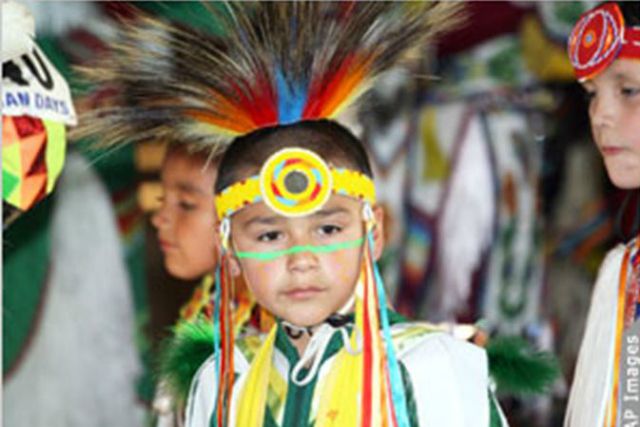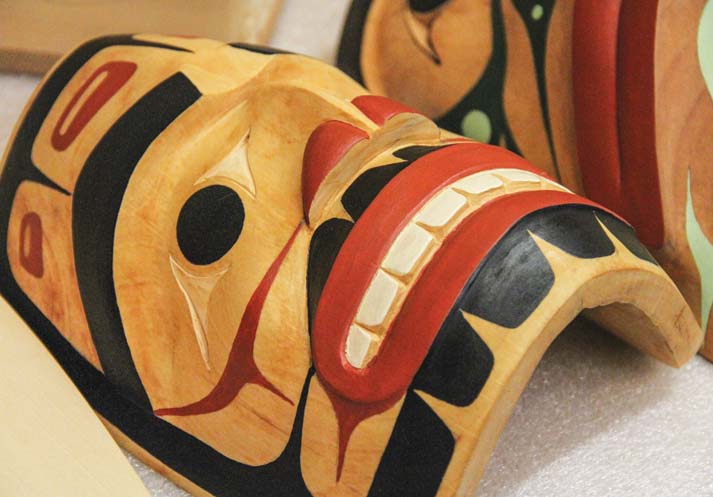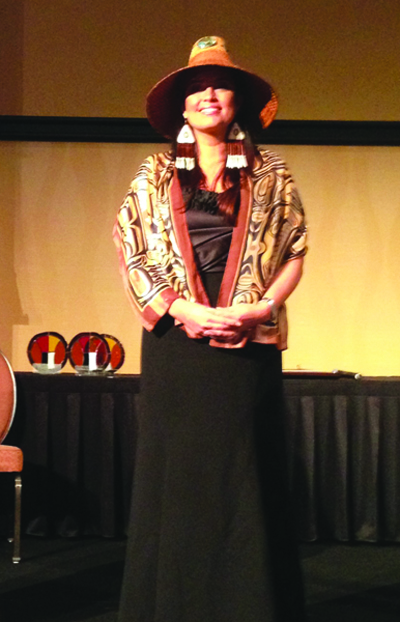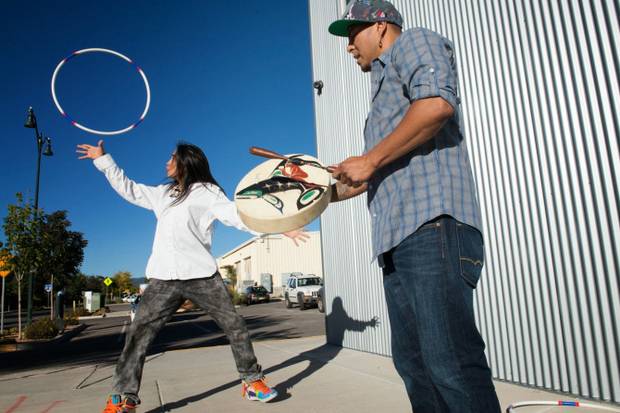Billy Frank: Keith Harper nomination historic for Indian Country
The following is an open letter from Billy Frank, Jr. regarding the nomination of Keith Harper to be the United States Representative to the United Nations Human Rights Council.
Dear Friends,
It is with great pride that I write this letter in support of my good friend Keith Harper, an enrolled member of the Cherokee Nation of Oklahoma, whom President Barack Obama has nominated to be the United States Representative to the United Nations Human Rights Council, with the rank of Ambassador.
If anyone knows a thing or two about protecting human rights in Indian Country, it’s me. I was first hauled off the river for exercising my treaty rights at the age of fourteen. I’ve been tear-gassed, tackled, punched, pushed face-first into the mud, handcuffed and dragged soaking wet to jail in defense of my boost basic of human rights as a Native. I am 82 years old and I have worked and collaborated with a wide variety of people in my life. I cannot think of a better representative to the United Nations Human Rights Council than Keith!
Keith and I have worked closely together on a number of issues facing Frank’s Landing Indian Community. Keith represented the Landing when our smoke shop fell under attack by the Nisqually Tribe, when all we were doing was operating like other tribal communities. Keith stepped in and successfully protected the Landing in federal court. Moreover, when the Landing did not have the resources at the time, Keith worked with us by contribution hundreds of hours of work on a pro bono basis. He has proven to me that he is not only an exceptional attorney but he try gets what is important to Native people. More importantly for this position, I know he understand the struggle for basic human rights on the global stage.
Everyone knows about Keith’s work on the Cobell trust case of course, but not a lot of people know about all of the other ways he’s advocated on behalf of Indian Country. He’s helped the Native American Church, tribes with treaty claims, impoverished tribes seeking federal recognition, tribes enforcing water rights and he’s worked on protecting tribal natural resources.
Keith has all of the talents to be a very effective Ambassador and he will become the first member of a federally recognized tribe to assume an Ambassadorial position. I can’t tell you how proud that makes me and how important a message it sends to our families and children all across Indian Country. This appointment is truly historic!
Thus, it is with great sadness that I learned that questions were raised about Keith’s work. I would tell anyone in the Senate considering Keith’s nomination that they can trust Keith at his word and that he has always worked for the betterment of all Indian Country.
I was even more saddened by the hit pieces written about Keith by a single report, Rob Capriccioso. First, let me give you some history on what I learned about Rob and his reporting. He used to write a blog called BigHeadDC which was a topic of a Huffington Post piece: www.huffingtonpost.com/2007/11/26/escort-throws-cold-water-_n_74227.html.
Rob is named in that piece as the perpetrator of a fraud. In there he is noted as reporting that Senator Trent Lott had a relationship with a male escort. But as that piece explains, it was simply not true. Rob’s report was called “fabricated” and false.”
I’ve also discovered that this is far from Rob’s only questionable incident as a reporter. He was also a freelance writer for an online magazine called “Radar” where he reported that the infamous DC Madam had called Sam Donaldson. Radar refused to publish this salacious report because the DC Madam said herself that the one entry on phone records of Sam Donaldson was a wrong number: radaronline.com/exclusives/2008/10/donaldsons-digits-wrong-number-php.
It would appear this report has a long history of writing questionable stories. For some reason, he has decided to target a person who I know has spent his career defending Indian Country.
Again, I strongly support the confirmation of Keith as the United States Representative to the United Nations Human Rights Council. I know he will serve his country well and make all of Indian Country proud.
Respectfully yours,
Billy Frank
Reflecting on the purpose of American Indian Heritage Month

By Dennis Jamison, The Washington Times
SAN JOSE, November 6, 2013—November is designated American Indian Heritage Month for the purpose of remembering the value of American Indians. The creation of this day was the culmination of a number of foundational efforts made over time, originally at the request of American Indians, and ultimately made substantial by cooperative efforts of various government officials. This designation was signed into law by President George H.W. Bush following a joint resolution of Congress in 1990. Specific proclamations regarding the day are usually made each year by the current president.
The long-suffering culmination of cooperative efforts made to honor the memory of the American Indian at the highest level of American government is truly significant and reveals a major turning point in the destructive clash between cultures and races. Sadly, American historians have not given it much attention.
Starting in the early 1900s, American Indians advanced a number of genuine efforts to heal the wounds. In a dramatic feat in 1914, Red Fox James, a member of the Blackfeet Tribe of Montana, rode on horseback over 4,000 miles across the U.S. collecting endorsements from the governors of various states for the creation of an “American Indian Day.”
Red Fox James gathered endorsements from 24 state governments and rode his horse to Washington, D.C., and delivered the documents to the White House on December 14, 1915. Unfortunately, there is no record of Woodrow Wilson or any representative of the federal government responding to his earnest endeavor. However, other respected leaders of the American Indians made serious and sincere efforts to further the healing effort. Individual Americans and leaders within the Indian communities seriously believed in bridging the gap of distrust, resentment, and hatred to reconcile and restore relations with white people and the government, and to extend the proverbial olive branch to the enemy.
On September 28, 1915, the Congress of the American Indian Association made a serious proclamation representing the Indian community stating that American Indians would be willing to become officially recognized as citizens of the United States. This was the first time an official Indian organization ever made such a formal indication that Indians wanted to become U.S. citizens. This Indian Congress also called upon “every person of American Indian ancestry” and all Americans to observe every second Saturday in May as a national “American Indian Day” as a day to honor the memory of the indigenous peoples.
The appeal to the general American Indian populations noted that their forefathers had fought against domination “for home, for family, for country, and the preservation of native freedom…” but the delegates to this Congress recognized that they needed to turn their attention to look to the future of their people so that they could “live in greater fullness” and “to move forward and acquire those things that make races and nations more efficient and more noble…” These words reveal the intent of the American Indians was to not just create a special day of remembrance, but to forgive an enemy, put the past in its place, and move on with their fight for family, for home, and for their survival as people.
Careful consideration of their determination definitely represented a much more peaceful pathway to pursue their fight for survival. This required sincere humility and the genuine capacity of heart to forgive, and such disciplined collective action is a bit reminiscent of the early Christians who could willingly forgive their Roman persecutors, or reminiscent of Dr. Martin Luther King, Jr.’s forgiveness of the bigoted white power elite in the South in the days of the Civil Rights Movement. This may have been because the Congress of the American Indian Association Congress was led by sincere Christians and honorable men.
Dr. Arthur C. Parker, a Seneca Indian, served as the National Secretary of the Congress and at the time, was the director of the Museum of Arts and Science in Rochester, N.Y. Rev. Sherman Coolidge was a full blooded Arapahoe Indian who was an ordained a deacon in the Episcopal Church, was the president of the Congress. These two fine Christian men were the embodiment of their people’s future and hope for a brighter future in the things that “make nations more efficient and more noble” and laid the foundation for the day to honor American Indians.
Following the 1915 declaration of the Congress of the American Indian Association, in May of 1916, the State of New York became the first state in the United States to formally recognize American Indian Day. Eventually, the Illinois legislature followed with another similar proclamation in 1919. Several states followed over the years and celebrated the fourth Friday in September to honor the American Indians. Governor Ronald Reagan established American Indian Day in California in 1968. The name was altered in 1996 by the Democratic legislature to be “Native American Day.”
Ultimately in 1976, Jerry Elliott, also known as High Eagle from the Cherokee/Osage Tribe, authored congressional legislation that declared the week of October 10-16 as “Native American Awareness Week.” President Gerald Ford signed the bill after it was passed. Then in 1990, the legislation expanded this week of recognition to an entire month and now it is known as “National American Indian Heritage Month.” Now, at least for some Americans who have the awareness, there will be times during November when they make the effort to remember the unique peoples who cared for this beautiful land a very long time ago.
It is way too late to reverse history (if that can be achieved at all), bit it is never too late to reverse bigotry and hatred, and replace such ugly human tendencies with simple respect and recognition of the value of the American Indian or all Native Americans. Such a mindset is important –yet the value of the descendants of the ancient American Indians stirring up long-buried hatred and resentment about the abuses that Native Americans have suffered since the days of European colonization, does not generate understanding, or mutual respect, or genuine trust. Such actions may have some value, but the intent may be suspect.
The purpose of the original request of the Congress of the American Indian Association was to create a foundation to bridge the gap of distrust, resentment, and hatred that persisted between the two peoples. It was not to perpetuate such a horrible reality, and to have done so would beg the question of the purpose behind such actions. Fanning flames of anger, hatred, and resentment, only generates much of the same and does not unite people – it drives people apart. While it may not have easily worked out for all indigenous peoples, it did for many. But more importantly, the American Indians, possibly less “civilized,” show up as the nobler of the two peoples via more respectable and well-intentioned efforts.
It needs to be known that at one point in time, leaders within the American Indian nations honestly believed their people needed to move beyond the pain, the bitterness, and the hatred so they could move forward and forge a better, brighter, and more peaceful future for their people. Their appeal was aimed at looking forward to the future and not to the past. They desired to “live in greater fullness” and “to move forward and acquire those things that make races and nations more efficient and more noble…”
Their actions were definitely more noble, and good reasons to honor the memory of the American Indians.
Hilbub Cultural Center features Tulalip artists in new exhibit

Photo/Brandi N. Montreuil, Tulalip News
By Brandi N. Montreuil, Tulalip News
TULALIP – The Hibulb Cultural Center & Natural History Preserve will be featuring a variety of works by Tulalip artists in a new exhibit, Coast Salish Inheritance: Celebrating Artistic Innovation.
Opening November 16 and running through May 2014, the exhibit will feature a unique variety of traditional and contemporary art from Tulalip artists.
A collaborative effort between museum staff and Tulalip artists during the museum’s summer exhibit, Ramp if Up! Skateboarding Culture in Native America was the inspiration behind this exhibit.
“Our goal is to showcase the artists and talents we have right here,” said museum curator of collections, Tessa Campbell.
Works of art in a variety of mediums will be featured. Traditional pieces include cedar carving and weaving, sculpture, beadwork, and dream catcher weaving. Contemporary art will include mixed media, photography, painting, drawing, and musical composition.
Featured artists include Frank Madison, Tryone Patkoski, Steven Madison, Mike Dunn, Sr. Aaron Jones, Marie Moses, Michelle Myles, Judy Gobin, Ty Juvinel, Herman Williams, Sr. Kaiser Moses, Charlotte Williams, Shannon Edwards Pablo, David Spencer, Sr. Derek Jones, Virginia Jones, James Madison, and Katrina Lane and many more.
“Every artist is different, so in this display we wanted to showcase the unique variety of traditional Coast Salish art and modern abstract contemporary art that our artists are creating. This is a gallery of our artists, for our artists,” said museum public relations coordinator, Mytyl Hernandez.
For more information on the exhibit, please contact Tessa Campbell at 360-716-2646 or tcampbell@tulaliptribes-nsn.gov, or Mytyl Hernandez at 360-716-2650 mhernandez@tulaliptribes-nsn.gov.
Initiative 522: Washington State Throws Out GM Food Labeling Measure

By Amrutha Gayathri, International Business Times
Washington state rejected on Tuesday an initiative to mandate the labeling of genetically-modified food items, bringing to an end an expensive campaign that pitted several out-of-state players against each other and drew criticism for failing to make clear the merits behind such a measure.
Initiative 522 was thrown out after 54.8 percent of the state’s voters opposed the labeling while 45.2 percent voted in favor, USA Today reported. The opposition raised $22 million, setting a record for fundraising by one side in the state, with the biggest donations coming from Washington, D.C.-based Grocery Manufacturers Association, and corporations that produce genetically-modified foods such as St. Louis, Mo.-based Monsanto Company (NYSE:MON), Johnston, Iowa-based DuPont Pioneer and Germany’s Bayer CropScience Ltd (FRA:BAYN).
A majority of donations supporting the measure also came from out-of-state entities such as Escondido, Calif.-based Dr. Bronner’s Magic Soaps, an organic retailer and Washington, D.C.-based Center for Food Safety. The state’s residents donated about $550 against the measure while about 10,000 individuals, including residents of the state, donated funds ranging from as little as $2 to $20,000 in support of the initiative.
Currently, there is no federal or state law that requires labeling foods produced by using genetic engineering, and the initiative was based largely on the premise that botched genetic engineering could cause “unintended consequences.”
As many as 49 countries, including Japan, China, Russia, and the European Union, have laws requiring the labeling of genetically-modified foods, according to official text supporting the initiative, which also argued that U.S. food exports to several foreign markets had been hurt from concerns about genetic engineering and due to a lack of labeling of such foods.
A majority of genetically-engineered produce such as corn, canola, soybean and cotton, are largely used as ingredients in other food products including soups, sauces, mayonnaise, breakfast cereals, breads and snacks, according to the U.S. Food and Drug Administration, or FDA.
Food manufacturers can voluntarily label whether foods of both plant- and animal-origin contain genetically-engineered ingredients based on guidelines issued by the FDA, according to information on the FDA’s website.
“However, if food from a GE animal is different from its non-engineered counterpart, for example if it has a different nutritional profile, in general, that change would be material information that would have to be indicated in the labeling,” according to the FDA.
The cultivation of genetically-modified herbicide-tolerant versions of several crops has jumped in the U.S. since 1996, and according to the latest statistics provided by the Department of Agriculture, 93 percent of soybean, 85 percent of corn, and 82 percent of cotton acreage in the U.S., as of 2013, is genetically modified.
Potlatch fund recognizes Native America’s game changers
Tulalip Vice-Chairwoman Deborah Parker among the honored

Photo/Theresa Sheldon
By Niki Cleary, Tulalip News
“There are two ways of spreading light. To be the candle, or the mirror that reflects it.” – Edith Wharton
TULALIP – Every year the Potlatch Fund recognizes Native Americans who personify leadership in five areas. Each of the awards is named after a tribal leader who exemplifies what it takes to change the world: The Antone Minthorn Economic Devlopment Award, the Pearl Capoeman-Baller Civic Participation award, the Billy Frank, Jr., Natural Resources Protection award; the Patricia Whitefoot Education Award and the Fran James Cultural Preservation Award. This year, Tulalip’s own Vice-Chairwoman Deborah Parker was among the recognized. She spoke about the experience in a recent interview.
Asked about the award, Parker first spoke about Quinault leader Pearl Capoeman-Baller.
“I’ve known Pearl for years,” she said. “She’s a woman who doesn’t really sit down, she doesn’t rest. She’s a woman who’s always wanted change and works hard to make that change happen. She’s a lady who is all about action and justice.
“To receive an award in the spirit of her work is a complete honor. And as a leader, Pearl embodies that balance of home, work and responsibility. She’s a mother, a grandmother, and a community member who works at the local, state and federal level and she brings all of that together. As an elder she is not on council anymore, but you still see her at conferences helping and motivating the younger generation to not be idle. She’s still working hard and not taking no for an answer.”
“There is no agony like bearing an untold story inside of you.” – Maya Angelou
Although she’s made impacts in many areas, Parker points to her work to make sure that provisions to protect Native American’s from non-natives were included in the reauthorization of the Violence Against Women Act (VAWA).
“It’s not just women, it’s also men who are very emotional about the passage of this bill,” elaborated Parker. “If I was just carrying legislation it would be easy to say thank you and good bye. I used my story, there was no hypothetical here. They had to look me in the face, someone who is a survivor. Being a female tribal leader was another source of strength. People in D.C. had to look at me and say, ‘No, we’re not going to support you or other Native women.’
“Some did,” she continued. “Some said they couldn’t support tribes taking jurisdiction, some were blatantly racist and said they couldn’t believe a non-tribal man would rape a Native American woman. But, what I don’t think anyone imagined is the support. There was so much support from non-tribal women. Native America hasn’t seen that in the past, non-natives supporting legislation to support Native people.”
“When we do the best we can, we never know what miracle is wrought in our life, or in the life of another.” – Helen Keller
Undeniably a role model across the nation, Parker was quiet, embarrassed even, when she talked about her notoriety.
“For the women who come out and say, ‘You’re my hero,’ and every time I receive an award, I feel honored. I accept it on behalf of those women who were murdered, for those women who don’t have a voice. Not just women, I want to acknowledge the young boys and men who have been abused. They need closure too, but where do they get it? Guys don’t stand around the lunch room and talk about sexual abuse because of that stigma surrounding it.”
Family and community continually inspire Parker to keep working.
“My children are 100% supportive. They get to hear my phone calls, they hear the conversations, they hear me fighting for our rights. It’s been a blessing, but being away from my family is the hardest part. If someone asks what it’s like to be a modern day warrior, you give up a lot in the process. My family sacrificed birthdays, holidays, they really put aside everything so we could get this [VAWA] passed.”
“The most effective way to do it, is to do it.” – Amelia Earhart
The Violence Against Women Act including the tribal provisions were approved. Parker explained that although we won the battle, the war’s not over.
“I just have to remind myself to keep going,” she said. “There’s so much work to be done. It’s not just me. There are a lot of amazing tribal leaders who pitch in.”
Parker explained that one of the most important ways to take care of her people is to be in the room where decisions are made. For tribal leaders a trip to Washington D.C. isn’t a vacation, it’s a battleground of constant negotiation, education and efforts to dispel stereotypes about Native Americans.
“If you don’t go, if your face isn’t there, you don’t have a voice,” Parker emphasized. “It’s not what you look like, it’s what you represent. If you are not at the table, you’re not included.”
“Everyone has inside her a piece of good news. The good news is that you don’t’ know how great you can be! How much you can love! What you can accomplish and what your potential is!” – Anne Frank
In closing, Parker exuded hope for the future.
“I feel incredible honored that young girls are inspired to share their voice, to come out with their abuse because I have. I feel honored because they can come out and speak their truth and find healing, not just one, but hundreds and thousands. It is worth it.
“If women can find strength through my words, I’m definitely not going to stop,” she stated. “If I can assist others to create protections for those little children who don’t have a voice, those are giant steps. I never dreamed this could happen in my time.”
SWAIA Winter Indian Market 2013 Features Performances by Six Time World Champion Hoop Dancer Nakotah LaRance and Acclaimed Musician and Performer Brian Frejo
Cirque du Soleil star Nakotah LaRance will hoop dance to flute, hand drum and hip hop beats by Brian Frejo at this year’s SWAIA Winter Indian Market. Saturday, November 30 and Sunday, December 1, 1:30pm.

Kitty Leaken
World champion hoop dancer and Cirque du Soleil star Nikotah LaRance will perform in collaboration with musician Brian Frejo at the SWAIA 8th Annual Winter Indian Market this Nov. 30-Dec. 1.
Santa Fe, NM (PRWEB) November 05, 2013
SWAIA’s 8th annual Winter Indian Market features performances by Nakotah LaRance (Tewa/Navajo/Hopi/Assiniboine) and Brian Frejo (Pawnee/Seminole). LaRance and Frejo will join forces for two performances showcasing original Native music and choreography that weave both traditional and contemporary elements.
About Nakotah LaRance
Nakotah LaRance is a six-time world champion hoop dancer who has showcased in competitions and performances around the world. He is most known for his performances in Cirque Du Soleil’s “Totem” and The Knocks & Fred Falke music video “Geronimo”.
About Brian Frejo
Frejo plays the Native American flute and hand drum and is a member of the Grammy nominated Native drum group “Young Bird”. As acclaimed DJ, music producer and promoter Shock B, Frejo has produced and performed at special events throughout the country.
Performances are on Saturday, November 30 and Sunday, December 1, 1:30pm at the Santa Fe Community Convention Center.
Winnipeg student says she was kicked off bus over sweatshirt saying: Got Land? Thank an Indian
See video here
Canada – The day after the city of Winnipeg launched their new aboriginal relations division to help build relationships and give opportunities to aboriginal youth in the city, a complaint has arisen.
A local high school student says she was unfairly kicked off a Winnipeg transit bus. And the girl and her brother say the city of Winnipeg isn’t taking their complaint seriously.
Four epic green ballot battles to watch today
By John Upton, Grist
It’s an off-year election so there are no congressional races today, but some state and local battles are of immense interest to environmentalists. Here’s a quick rundown of the key green fights to keep an eye on:
Virginia governor’s race
In the gubernatorial election in Virginia, the leading candidates are virtual caricatures of their political parties when it comes to climate change. The Democrat, Terry McAuliffe, is concerned about global warming and supports renewable energy. He also used to run a (now quite troubled) greentech company. The Republican, Ken Cuccinelli, is a climate skeptic who’s been trying to score political points by whining about the Democrats’ “war on coal.” Cuccinelli previously led a witch hunt of a prominent climate scientist, Michael Mann, trying, unsuccessfully, to force the University of Virginia to turn over emails and other records related to Mann’s time at the school. (You’ll never guess who Mann has been supporting in the governor’s race.)
President Obama called out Cuccinelli’s climate illiteracy while stumping on Monday for the Democrat. “It doesn’t create jobs when you go after scientists, and you try to offer your own alternative theories of how things work and engage in litigation around stuff that isn’t political,” Obama said. “It has to do with what’s true. It has to do with facts. You don’t argue with facts.”
Virginia, a coal-producing state, used to be solidly red, but in recent years it’s turned purple. The state’s voters went for Obama in 2008 and 2012, and they look very likely to lean blue in this race. McAuliffe is firmly up in the polls.
Read more about the race here and here.
Anti-fracking ballot measures in Colorado
The Colorado Oil and Gas Association has poured hundreds of thousands of dollars into advertisements trying to convince residents of four Colorado cities to vote against ballot measures that would ban or suspend fracking.
Gov. John Hickenlooper, the pro-fracking Democrat who once drank fracking fluid in an attempt to demonstrate its harmlessness, claims the proposed measures in Boulder, Broomfield, Fort Collins, and Lafayette would be illegal. His administration is already suing one city, Longmont, for having the audacity to tell frackers to stay the hell away from their community.
“If you ban fracking you are essentially banning exploration and extraction of hydrocarbons,” Hickenlooper told Bloomberg during an interview about the ballot mesures. “Our state constitution guarantees people who own the mineral rights that there can be extraction from the surface to get those minerals.”
Washington GMO-labeling ballot measure
If Washington voters approve ballot initiative 522 [PDF], the state would mandate the labeling of foods containing genetically modified ingredients starting in 2015. The Washington Post reports that opponents have “raised at least $22 million, with large out-of-state food companies and agribusinesses like Monsanto, Dupont Pioneer, Coca-Cola, and Kellogg donating heavily.” Supporters have raised $8.4 million, mostly in small donations.
This is the first big state election battle over GMO labeling since Californians rejected a similar ballot measure one year ago. That election also saw tens of millions of dollars spent by large food corporations who want to keep their GMO ingredients a secret from their customers.
Read more about the initiative here.
Whatcom County council elections
Whatcom County in Washington state, a rural area in the northwestern corner of the country, has the power to determine whether a proposed $600 million coal terminal gets built. The Gateway Pacific Terminal would load coal mined in Wyoming and Montana onto ships bound for Asia. The county council will approve or reject key permits needed to construct the terminal. That’s why more than $1 million has flowed into four county council races from energy companies and environmentalists nationwide.
Rising Tide ‘fracks’ B.C. premier’s front lawn
November 3, 2013. Source: Rising Tide Vancouver Coast Salish Territories
On Sunday morning, activists with Rising Tide-Vancouver Coast Salish Territories set up a 15-foot mock fracking rig on Premier Christy Clark’s lawn and announcing that “Because the Premier loves fracking, we figured we would save her the hassle of trying to take over other peoples’ homes and bring it right to her!” says Jacquelyn Fraser, an activist with the group.
“We are just so worried about all the water that is being used and polluted in northeastern B.C. for fracking. We are sure Premier Clark is too and we’re sure she can share some of her own supply so that she can see the boom in the industry she keeps promoting,” says Fraser as ‘construction workers’ set up the rig behind her. “She may not end up with a lot of fresh water at the end, but at least she has some we could use right now.”
The group is referring to the impacts on the environment caused by hydraulic fracturing, a process through which water, sand, and chemicals are injected into the ground to fracture rock and release unconventional natural gas.
“With Christy Clark touring North America to promote Liquiefied Natural Gas, fracking and gas extractionis set to take over the province,” says Maryam Adrangi, Climate and Energy Campaigner with the Council of Canadians.
Both Rising Tide and Council of Canadians toured up to northern B.C. to speak with communities impacted by fracking and fracking pipelines, such as the Pacific Trails Pipeline. Numerous families said that shortly after fracking began in the region, they were no longer able to drink their tap water and the water burned their children’s skin.
“There are over 23,419 operating fracking wells in the region and another 4,000 which are abandoned. We shouldn’t make communities up north face all the burden,” said Adrangi jokingly. “In all seriousness, no one should have to face the impacts of fracking which include having all of their freshwater being used by industry and for coporate profit, and then having unidentified, toxic chemicals put back into the water cycle.”
The group also noted the serious climate impacts of fracking, as more studies indicate that fracked gas can produce as much emissions as coal.
Christy Clark has been strongly encouraging the province’s future in the fossil fuel industry, with a meeting with Alberta Premier Alison Redford on Tuesday to discuss the infamous Northern Gateway Pipeline proposal as she just returned from a North American tour to promote Liquefied Natural Gas (LNG).









